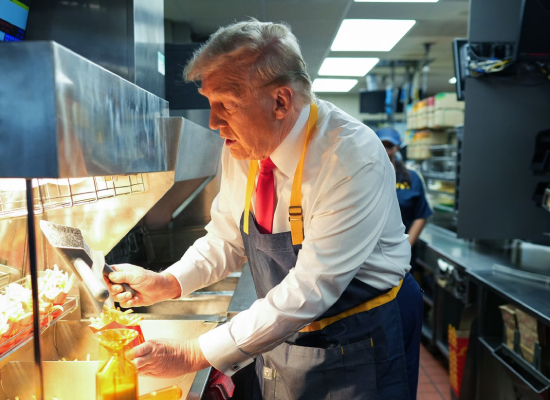Worcester’s Path Forward: Opportunities and Overcoming Challenges
Eric Batista’s Vision for Worcester’s Future
In a landmark State of the City address, Worcester’s City Manager, Eric Batista, articulated a bold vision for the city’s trajectory, highlighting both its abundant opportunities and formidable challenges. Delivered at the Jean McDonough Arts Center and jointly organized by the city and the Worcester Regional Research Bureau, the address served as a clarion call to action for Worcester’s residents and stakeholders.
Seizing Opportunities: Worcester’s Landscape of Progress
A City in Transformation
Batista’s address celebrated Worcester’s rich tapestry of growth and transformation, underscored by recent Census Bureau data showcasing the city’s expansion. From iconic landmarks to burgeoning developments like Polar Park and the rejuvenated Doherty High School, Worcester’s skyline reflects a city in the throes of evolution. The city’s strategic growth is a testament to its resilience and forward-thinking approach.
Empowering Communities
Emphasizing the pivotal role of community solidarity, Batista recounted personal anecdotes of resilience and mentorship, urging residents to uplift one another. As Worcester’s first Latino city manager and a product of its nurturing environment, Batista embodies the city’s spirit of inclusivity and empowerment. His personal journey serves as an inspiration, highlighting the importance of community support and collective effort.
Charting the Course: Worcester’s Strategic Blueprint for Success
The Five-Year Plan
Batista outlined a comprehensive five-year strategic plan aimed at addressing Worcester’s multifaceted challenges head-on. Housing initiatives, economic development strategies, and public health interventions form the bedrock of this ambitious roadmap, signalling Worcester’s commitment to equitable growth and prosperity. This strategic blueprint is designed to ensure that the city meets its future needs while maintaining a high quality of life for its residents.
Housing and Economic Development
At the heart of Worcester’s resurgence lies its economic vibrancy, with Batista setting ambitious targets for job creation and entrepreneurship by 2030. Leveraging the Worcester Now | Next Plan, the city seeks to attract key industries while nurturing existing sectors. The focus on affordable housing, alongside robust economic strategies, aims to create a balanced and sustainable growth model for Worcester.
Unity in Diversity: Navigating Worcester’s Mosaic of Identities
Promoting Inclusivity
Against a backdrop of national discord, Batista championed Worcester’s ethos of unity amidst diversity. Through the establishment of an Office of Diversity, Equity, and Inclusion, the city reaffirms its commitment to fostering an environment where every voice is heard and every individual valued. This initiative is a cornerstone of Batista’s vision, aiming to bridge gaps and build stronger community ties.
Celebrating Cultural Richness
Worcester’s demographic mosaic is one of its greatest strengths. Batista emphasized the importance of celebrating this cultural richness and ensuring that all community members feel included and valued. The city’s policies and initiatives are geared towards promoting social cohesion and mutual respect among its diverse population.
Forging Ahead: Collaboration as Worcester’s Catalyst for Change
Embracing Collaboration
As Worcester embarks on this transformative journey, Batista implored residents to transcend ideological divides and embrace a spirit of collaboration and compromise. By working together, Worcester can surmount any obstacle and realise its full potential as a city of opportunity and inclusivity. This collaborative approach is seen as essential for addressing the complex challenges facing the city.
Strategic Partnerships
Batista highlighted the importance of strategic partnerships with local businesses, educational institutions, and non-profits. These collaborations are vital for driving innovation, economic growth, and social progress in Worcester. By leveraging the strengths of various community stakeholders, the city aims to create a robust and resilient future.
Frequently Asked Questions
What are the key points highlighted in Eric Batista’s State of the City address?
Eric Batista outlined Worcester’s progress, challenges, and proposed solutions in his State of the City address, emphasizing opportunities for growth and the importance of community collaboration. His vision includes a comprehensive strategic plan focused on housing, economic development, and public health.
How does Batista characterize Worcester’s current landscape of progress?
Batista celebrates Worcester’s growth and transformation, citing recent Census Bureau data and developments like Polar Park and the renovated Doherty High School as indicators of progress. These developments reflect the city’s dynamic evolution and strategic planning efforts.
What initiatives has Batista proposed to address Worcester’s challenges?
Batista outlined a comprehensive five-year strategic plan focusing on housing, economic development, and public health interventions to tackle Worcester’s challenges. This plan aims to foster equitable growth and ensure a high quality of life for all residents.
Can you provide more details about Worcester’s strategic plan for the next five years?
The strategic plan aims to address challenges head-on, focusing on housing initiatives, economic development strategies, and public health interventions to foster equitable growth and prosperity. Key elements include affordable housing projects, job creation, and support for local businesses.
How does Batista plan to promote economic vitality in Worcester?
Batista aims to fuel Worcester’s economic vibrancy by setting ambitious targets for job creation and entrepreneurship, leveraging the Worcester Now | Next Plan to attract key industries and support existing sectors. The plan includes initiatives to boost innovation and competitiveness in the local economy.
What steps is Worcester taking to uphold its legacy of community support and inclusivity?
Worcester reaffirms its commitment to community solidarity and inclusivity through initiatives like the establishment of an Office of Diversity, Equity, and Inclusion, championed by Batista. These efforts aim to create an inclusive environment where all community members feel valued and supported.
Could you explain the significance of establishing an Office of Diversity, Equity, and Inclusion in Worcester?
The establishment of this office underscores Worcester’s commitment to fostering an environment where every voice is heard and every individual valued, promoting inclusivity and unity amidst diversity. It serves as a platform for addressing issues related to equity and social justice in the community.
What are some examples of recent developments and projects contributing to Worcester’s evolution?
Recent developments like Polar Park and the rejuvenated Doherty High School reflect Worcester’s evolution, showcasing the city’s progress and potential for growth. These projects are part of a broader strategy to enhance the city’s infrastructure and amenities.
How does Batista propose to foster collaboration and unity among Worcester residents?
Batista implores residents to transcend ideological divides and embrace collaboration and compromise, emphasizing the importance of unity in navigating Worcester’s future challenges. By fostering a collaborative spirit, the city aims to tackle complex issues effectively.
What are some of the ambitious targets set by Batista for Worcester’s future development and growth?
Batista sets ambitious targets for job creation, entrepreneurship, and economic development by 2030, aiming to position Worcester as a beacon of opportunity and inclusivity in New England. The strategic plan includes specific goals for economic growth and social progress.

